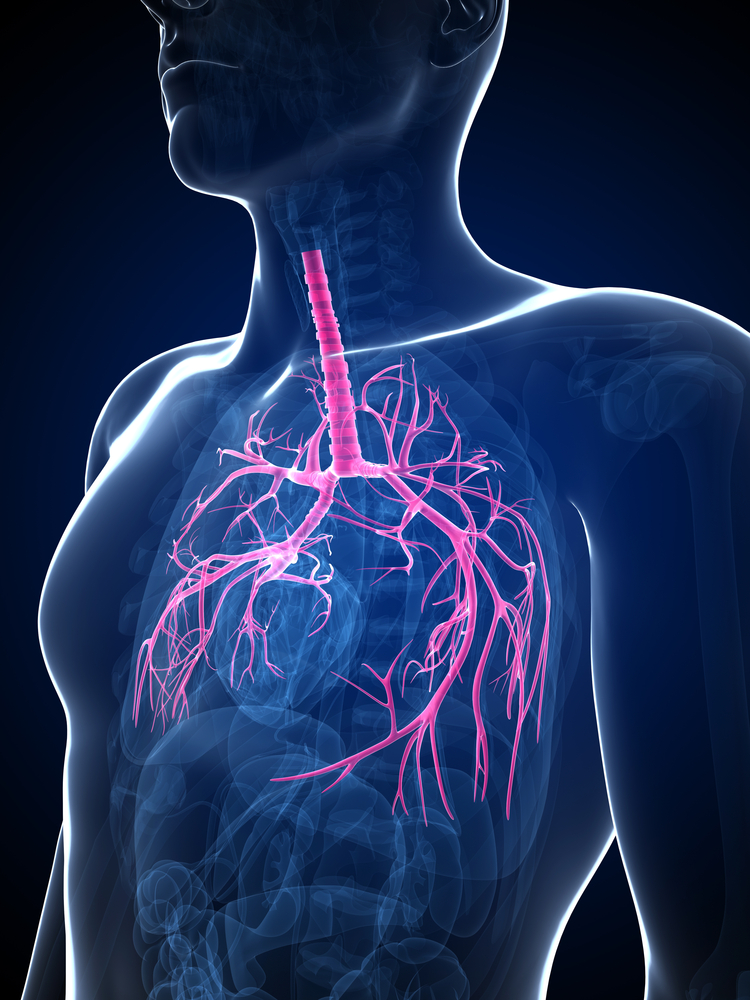Aerobika Device Shows Promise as Treatment for Bronchiectasis as Well as COPD
Written by |

The Aerobika device, which Monaghan Medical Corporation (MMC) developed to ease symptoms of chronic obstructive pulmonary disease (COPD), may also be effective in patients with non-cystic fibrosis (CF) bronchiectasis, according to a study.
The research, “Non-Cystic Fibrosis Bronchiectasis: Regional Abnormalities And Response To Airway Clearance Therapy Using Pulmonary Functional Magnetic Resonance Imaging,” was published in the journal Academic Radiology.
Bronchiectasis patients have excess mucus in their airways that can damage the passages, promote infections, and lead to breathing difficulties.
Previous studies have shown that patients with COPD and bronchiectasis tend to have higher rates of exacerbation, or increased severity of their diseases, and worse outcomes.
A study presented at last year’s meeting of the American College of Chest Physicians, titled “Bronchiectasis in Patients With COPD: An Irrelevant Imaging Finding or a Clinically Important Phenotype?,” showed that 92.7 percent of COPD patients who had had more than one exacerbation the previous year also had bronchiectasis. The finding called attention to the overlap between the conditions.
The Aerobika device alleviates symptoms associated with excessive mucus in the airways. It opens up the lungs and creates vibrations in the chest, helping people expel mucus through the upper airways when they cough. In COPD patients, the device significantly reduced exacerbations after one month of use, in combination with COPD medications.
The study evaluating the Aerobika device in bronchiectasis involved 15 patients and 15 healthy individuals matched by age. The assessment tools the researchers used included CT scans to confirm the presence of bronchiectasis, magnetic resonance imaging (MRI), and spirometry, a test to measure lung function.
Bronchiectasis patients were also evaluated with an exercise-capacity test known as the Six-Minute Walk Test, the St. George’s Respiratory questionnaire, and the Patient Evaluation Questionnaire. The assessments were made before and after three weeks of Aerobika-device treatment.
All bronchiectasis patients showed significant improvement in airway clearance after using the device. Nearly half — eight out of 14 — showed improvement in ventilation, or the ability to breathe in and out. The study reported no adverse side effects from using the device.
Researchers concluded that the device was effective in patients with bronchiectasis, in line with what has been observed in COPD patients.
“This most recent study just adds to the mounting clinical evidence that our Aerobika device is effective for patients with bronchiectasis, COPD, and related respiratory disease,” Dominic Coppolo, vice president for clinical strategy and development at Monaghan Medical, said in a news release. “We are always pleased to see real-world findings that demonstrate the efficacy of our Aerobika device in clearing mucus to improve lung function in patients with chronic bronchial ailments as well as high-risk COPD patients.”
The device is marketed in several countries, including the United States, Canada, Mexico, the United Kingdom and Germany.




